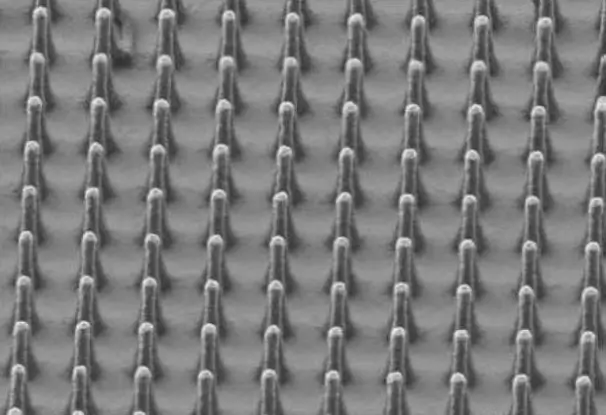
High power, spectrally pure, ultra-stable DPSS lasers designed to create refined structures over surfaces exceeding 8 inches
Create refined structures over large area surfaces exceeding 8 inches with minimal variability. Our ultraviolet lasers at 320 and 349 nm offer longer coherence lengths, extended lifetimes, and significantly lower cost of ownership compared to traditional gas-ion lasers, delivering unmatched performance and flexible integration options.
Laser interference lithography (LIL) is a highly precise technique used to create ultra-fine patterns for micro and nano-scale devices.
In LIL applications, single-frequency DPSS lasers provide the stability and coherence needed to generate precise interference patterns on photosensitive materials. These lasers ensure accurate patterning at sub-micron and nanoscale levels, enabling the production of advanced micro and nano-scale structures with
exceptional precision.
The wavelength stability of single-frequency DPSS lasers is vital for controlling interference patterns, reducing variability, and improving pattern consistency across large surfaces.
Watch our video to find out more about the role of DPSS lasers in interference lithography applications.
Why choose Skylark Lasers for interference lithography?

"The Skylark 349 NX laser was successful in producing high-resolution periodic patterns through laser interference lithography (LIL). By employing a Lloyd's interferometer configuration, sub-100 nm features were achieved using a combination of chromium and positive photoresist."

Dr. Bodo Fuhrmann, Martin-Luther-Universität

DPSS lasers power applications in interference lithography
Ultra-stable, high precision DPSS laser sources support our customers' work across several interferometric lithography applications:
-
Nanofabrication of high-resolution periodic structures
-
Scanning electron microscope integration (SEM imaging)
-
Diffractive optical element (DOE) fabrication
-
Optical filter fabrication
-
Nanophotonic applications
Their long-term reliability and stability ensure consistent, high-quality results.
By integrating these lasers into lithography processes, manufacturers can enhance production efficiency, minimise errors and defects, and achieve the high resolution required for cutting-edge technologies.
.png)
.png)

.png)


Skylark Lasers are made for interference lithography
The Skylark Lasers NX series of ultraviolet DPSS lasers delivers wavelengths at 320 and 349 nm - offering ultra-low noise < 0.1% RMS, and ultra-narrow linewidths < 0.5 MHz while maintaining up to 400 mW output power in the UV range.
The 320 and 349 nm wavelengths are compatible with industry standard UV photoresists, and with coherence lengths > 100 m, they are the ideal laser source for your interference lithography application.
High power
Increases exposure efficiency, enabling faster processing and deeper photoresist penetration over large areas.
Coherence
Produces sharp, well-defined interference fringes for accurate patterning at nanoscale.
High stability
Ultra-stable frequency and intensity allow high aspect ratios with a frequency drift of <100 fm over 24 hours.
Uniform illumination
Uniform spatial mode with M2 < 1.2 provides even illumination with minimal variability in pattern structures.

